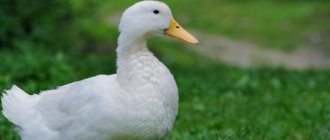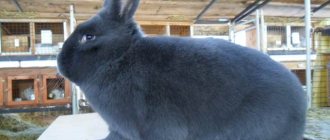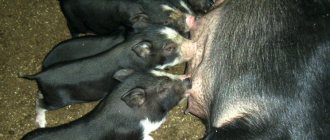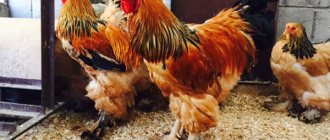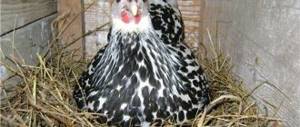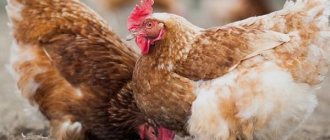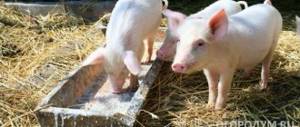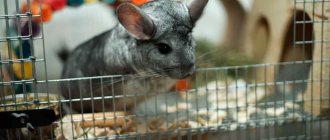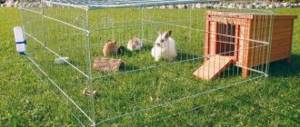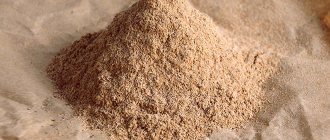Characteristics
Laying hens begin to lay eggs for about four months under good care conditions.
In 30 days, such a chicken lays about 28 eggs. The eggs are not very large, weighing approximately 60–65 grams, ivory-colored, and have a regular round shape. Each year, each of them brings from 180 to 220 eggs. This is a pretty good indicator.
Once hatched, chicks grow very quickly. By a month, their plumage has fully grown, their weight is 550 - 560 grams. At two months, such a chicken weighs about 1.5 kilograms. And at four his weight exceeds 2.5 kg. The usual weight of such chickens at productive age exceeds 3.5 kg. And roosters grow up to 5 kilograms.
Features of reproduction
Natural instincts and pack formation
Brekels are characterized by an active lifestyle. Chickens find it difficult to sit in one place, so they lack parental instinct. Laying hens are not able to hatch eggs. It is impossible to raise a mother hen. Hens do not care for newborn chicks. But they can easily handle older chickens.
The young grow quickly and become stronger. Brood mortality is low. Plumage occurs early. Because of this, the stamina of chickens is high.
For positive fertilization, a balance is maintained between roosters and hens: for every 7-10 hens there is 1 male. Layed eggs are taken from the hens immediately after hatching. Small eggs are left for consumption, large ones - for breeding.
Proper incubator and egg selection
To incubate eggs, specialized devices are used to make the work of farmers easier. The incubator has ventilation, an independent operation mode, and is equipped with temperature and humidity sensors. The device with automatic egg turning is easy to use.
Eggs are taken from healthy, strong chickens. Upon visual inspection, the testicles do not contain chips, cracks or other defects. Eggs are taken fresh, no more than 7 days.
They are first examined with an ovoscope to determine the presence and location of the yolk. It should be in the center, and there should be an empty area at the blunt end of the egg. To disinfect eggs, soak them in a manganese solution.
Incubation stages
Before laying eggs, the incubator is heated to 35-38 degrees. The eggs are placed on the nets with the blunt side up. Marks are made on them, and the start date of incubation is recorded.
In the first week - a stable temperature of 37 degrees, humidity - 55-65%. From the fourth day, the eggs are constantly ventilated and turned over every 2-3 hours.
In the first days of the second week: temperature 37 degrees, humidity – 40-50%. Turn the eggs twice a day until they hatch.
From the 12th day ovoscoping is carried out in order to select non-developing chicks. A dead embryo resembles an uneven spot and is located close to the shell.
A normal embryo begins to hatch on the 24th day of incubation. The temperature at this time is 39 degrees, humidity 70%. The chicks hatch approximately on the 25th day. The babies remain in the incubator until completely dry. For some days, 24-hour light is required.
Selection of young chicks
After a week of life, the chicks are culled. Signs of healthy birds: an overgrown umbilical cord without blood or dirt, pronounced fluff. The beak is without irregularities, the wings are of regular shape. The chicks are active, react to movements and sounds.
Newly hatched chickens are placed in prepared cages with straw. For healthy growth and a strong body, the chicks are fed with crushed cottage cheese, herbs, and pureed boiled eggs. A solution of glucose, fish oil and yeast will help strengthen the immune system of chickens.
Description of the Brekel breed
The rooster has a dense rectangular body. Its corners are smoothed out by the thick plumage on the bird's body. The neck is of medium length, with abundant and long plumage.
It smoothly turns into a falling back. The shoulders are wide, the wings are tightly pressed, and their ends are covered by long lumbar plumage.
The tail of roosters is held high and richly feathered. He has very long rounded braids, visually enlarging the tail and body of the rooster. The chest is set deep and wide, the belly is equally wide and large.
The rooster's head is medium-sized, but wide and flattened. The bird has small feathers on its face. The comb is medium, erect. It can have from 5 to 6 teeth. The earrings are medium, rounded.
The earlobes are bluish-white. The eyes have a black edging around them and are colored dark. The beak is strong and blue, but its tip is light in color.
The shins are not very prominent, the metatarsals are of medium length. As a rule, they are painted in light blue shades. Roosters' fingers are spaced correctly and have white claws.
Hercules chickens: description of the breed, origin, cultivation characteristics, places of sale, etc.
Are you interested in Magyar chickens? Very good! Here is all the necessary information about them.
But read about indoor geranium at: https://selo.guru/rastenievodstvo/geran/uhod-v-domashnih-usloviyah.html.
Chickens have a more horizontal back, a very full belly and a large tail. The back of the ridge is slightly tipped to its side. Chickens' earlobes are bluer. This pigment also extends to the face and lower part of the ridge.
A too narrow and skinny body is considered to be a serious disadvantage. Also unacceptable are a tail that is too high or too low, drooping wings, or yellow earlobes.
Color
There are two possible color varieties: silver and golden. Silvers have a pure white head and neck feathers, but each feather has a black base.
The back and lower back remain white, but the largest feathers have a beautiful pattern. On the chest, side of the body and belly, the feathers have not only a dark base, but also dark transverse ribbons. The white ribbons at the bottom of the chest become painfully wide.
The chicken has silver-white feathers on its head and neck. In birds with intense breast coloration, dark tips on the feathers are allowed. The rest of the plumage is intense black with light transverse bands.
In golden roosters and hens, the main color is black, but the structure of the pattern remains the same as in silver individuals. However, the latter color is replaced by golden brown.
Description of external signs
The breed was bred as an egg breed, but in terms of indicators it is more related to the egg-meat direction. A distinctive feature of chickens is considered to be strong immunity, indifference to moving, changing housing, and rapid adaptation to new conditions.
Brekel chickens have the following external characteristics:
- Although small in stature, the bird is stocky, and its habits show a strong build. The body is squat, the belly is wide, the chest protrudes noticeably in front of the body.
- Adults have well-developed wings. The bird presses them tightly to the body, due to which the ends of the long feathers are hidden under the tail.
- The tail is strongly raised; in adult males it is bushy and consists of long sickle-shaped feathers.
- The paws are gray in color, the legs are poorly developed.
- The neck is short, due to the thick plumage it practically merges with the body.
- The head is proportional to the body, small in size, decorated with a small red comb and dark expressive eyes. The male has an erect crest, while the hens have it hanging to one side.
- The beak is short, strongly pointed at the end and thickened at the base. The color is gray with a bluish tint, the tip is lightened.
Plumage is the main decoration of the Brekel breed. There are many colors obtained through numerous crossings. However, golden and silver chickens are considered the most common.
Silver Brekel rooster.
Silver birds have black and white colors that create a cuckoo pattern. White feathers dominate in the neck and head area. Golden chickens have a bright red head and neck and a dark tail. The cuckoo pattern is present throughout the body and consists of black and brown feathers.
Description and external characteristics of the breed with photographs
A distinctive feature of the Brekel breed is its very bright appearance and original color of plumage. These rather squat and stocky birds resemble Dutch Welsumer laying hens in appearance.
[adsp-pro-4]
There are two types of colors in the breed: golden and silver:
- The silver is characterized by a white head, back and neck, but there are small black spots at the base of each feather. At the same time, the plumage has transverse stripes on the chest and sides. The lower back and back of the body have a richer black color.
- The golden color is characterized by a predominance of black, and instead of white there is a dark reddish-brown. The pattern on the feathers of both species is the same.
The description of the breed is quite interesting:
- The bird's body is wide, rectangular, but round and dense.
- The neck is not long, with lush feathers, and the head is small, wide, slightly flattened.
- The back is sloping, with strong, massive shoulders.
- The wings fit tightly to the sides, the lower back and tail are distinguished by abundant plumage.
- The belly is voluminous, the chest is full and deep.
- The comb is straight, five-toothed, highly developed in both cockerels and hens.
- The eyes are quite expressive, large, black.
- The beak is bluish-gray, small, strong.
- The legs are thin, medium length, gray.
Faults of the breed include a narrow body, a low or very high tail, drooping wings, an unclear pattern on the sides or the presence of large spots on the chest.
Farmers' advice
Many poultry farmers prefer this breed for the following reasons:
She is undemanding in food, hardy and not capricious. It has a bright decorative appearance. Laying hens will only need special attention during the molting period. It is important to remember that representatives of the breed are extremely nimble and curious. Therefore, to prevent birds from being injured, it is necessary to remove all sharp and piercing parts and objects from the house and aviary.
Despite the decline in popularity, the Brekel is a very good egg-laying breed and is still of interest to farmers
Despite the decline in popularity, the Brekel is a very good egg-laying breed and is still of interest to farmers.
The video shows a bird of the Brekel breed:
Origin of the breed line
How and when the Brekel chicken breed was formed is unknown. Scientists suggest that she comes from Belgium, since it was in this country that documents were found that describe similar chickens. Information about them appears in various Belgian books dating back to 1416. From the 15th to the 20th century, this type of poultry was very popular in its homeland.
In the small town of Nederbrekel at the end of the 19th century, a club for fans of this ancient line was founded. In 1899, a standard for the Brekel breed was approved. World wars that broke out one after another led to a significant reduction in the number of birds. In the 70s of the 20th century, poultry enthusiasts decided to start restoring the breed. Thanks to their efforts, only 5 Brekel chickens were found. A few years later, with their help, the population was saved.
By the end of the 20th century, interest in the breed began to fade, as many new hybrid varieties of birds with high productivity appeared. However, true connoisseurs of the Belgian line still remain faithful to it. Among them there are Russian breeders.
History of the breed
The history of the origin of chickens goes back a long way. Until now, no one has been able to find out how old Brekel is. The same situation is observed with the area where they were bred. Many historians believe that Brekel chickens first appeared in Belgium and are descendants of indigenous birds.
Records have been found that say that the Brekel cross has been popular in our country for more than 600 years. Records describe this breed from the early 15th century.
At the end of the 19th century, a club for chicken lovers was opened in Nederbrekel. After 1 year, poultry farmers insisted on creating an official bird standard. Based on this data, poultry farmers classify Brekel as a Belgian chicken.
According to historical information, it is known that crosses were created in order to obtain a large number of eggs with white shells. In the 20th century, due to the World Wars, the number of Brekel birds decreased significantly. In the 80s of the 20th century, only 5 Brekel individuals were found in their homeland.
Poultry farmers did not despair and revived the breed in a special club. At the end of the 20th century, a book was published telling about the content of crosses. In this century, the demand for birds has fallen slightly; Brekel has been replaced by new, more productive crosses. But there are quite a few lovers of this breed, since Belgian birds have a large number of advantages.
Feeding
The diet of Silver Brekels includes foods such as whole and crushed grains, greens, root vegetables, worms, bone meal, and fermented milk products. It is imperative to add shells to the food to increase the breed’s egg production, as well as various minerals.
- Stern
- Recipes
- Supplements
Compound feed pk-1
Description of food for egg breeds. Instructions for feeding laying hens Read
Compound feed pk-2 and pk-3
Mineral and vitamin compositions, feeding standards Read
Compound feed pk-4
Used to feed laying hens aged 15-17 weeks Read
Compound feed pk-5
Composition and instructions for feeding broiler chickens Read
Purina Pro
Important differences from the previous line, application patterns Start, Growth, Finish Read
Germination and steaming of barley and wheat for chickens: how to do it correctly and how to give it to laying hens
Wheat for broilers
Rules for feeding broiler chickens with wheat. Dosage for chickens from the second day of life and adult birds Read
Mash
Making mash for broilers at home Read
Rice and buckwheat
How and in what form you can use rice and buckwheat to feed chickens. Standards for adult birds and chickens Read
Bread
What kind of bread can you feed chickens and how to do it correctly Read
Fish
The product is given in limited quantities: overfeeding can cause serious harm to the bird Read
Chalk
Chalk as a food additive for chicken feed. Feeding standards for chickens, young animals and laying hens Read
Meat and bone meal
Meat and bone meal is a mandatory additive for feeding chickens, containing protein and fats of animal origin Read
Fish fat
How to give fish oil to chickens, layers and broilers. What are the benefits of the drug and are there any contraindications Read
Limestone
Limestone (dolomite) flour in the diet of chickens. Advantage over chalk and feed shell Read
Salt
Daily dosage of salt for adult birds and young animals and cases of unwanted use Read
Feeding birds
Basics
Brekels are unpretentious eaters. Chickens are fed three times a day at certain times. In summer, the daytime meal is skipped, as the chickens themselves find food in the pasture.
The diet consists of natural products and combined feeds. The first type of food includes all types of greens, grains, beans, and vegetables. Fish or bone meal is mixed into food.
In the morning, the brekels are given wet feed mixed with grain. During the day, chickens prefer a mash of beans, herbs and vegetables. In the evening, chickens eat a dry mixture of grains and grass.
The grass is harvested and dried for winter. To improve the egg production of brekels, calcium, phosphorus, and vitamin B supplements are used. They are contained in charcoal, salt, and yeast.
The diet must include shell rock and fine gravel. These components have a beneficial effect on the gastrointestinal tract of brekels.
Nutrition rules and consumption standards
Nutrition becomes more intense during molting, in winter and when laying hens. Make sure that the food is always fresh, prepared from unspoiled products.
Leftover food is removed after half an hour. Vitamins are added to laying hens. To improve the productivity of chickens, eggshells, pine flour, and vegetables are mixed into the diet.
Chickens' food should be warm. Hot food will burn the Brekels' stomach, and insufficiently heated food will cause indigestion. In winter, food quickly reaches a comfortable temperature, so it is served hot. This also applies to water.
Table of daily feeding rates by season:
Characteristics of Brekel chickens
Brekel chickens are one of the most ancient representatives of birds. Their main features are strong immunity and strong health. Previously, this species was bred by farmers in Belgium, but today it is being replaced by other productive individuals.
Description of Brekel breed chickens
Breed characteristics
The shape of the rooster resembles a rectangle, but all corners are covered with feathers, which makes the figure softer. The feathers are slender and long. The neck is small. On it, the male can be seen with elongated feathers that cover him from the ears to the beginning of the back. The colors smoothly flow into one another. The feathers from the neck fall easily and softly onto the shoulders, giving Brekel grace and grandeur. The shoulders are wide and massive.
The wings fit closely to the body. In addition, the end of the wing is almost impossible to see, since the feathers on the back cover it. Brekel's tail is set straight and has many feathers. Due to the elongated braids, the tail and size of the male increase. The belly is deep-set and wide, the tail is massive and large.
The male's head is small, but wide and flat. Small feathers can be seen on the birds' heads. A small comb always stands proudly. You can count the teeth on it, on average there are 5 or 6 of them, the earrings are medium sized and rounded.
The lobes are all bluish-beige in color. There is a black edging around the eyes, and the eyes themselves are almost always dark. Brekel's beak is powerful and has great striking power. The color of the beak is always bluish, but its tip will always be light. The shins are not noticeable, they are small in size, as are the metatarsals. They have a bluish color. The male's fingers are spaced proportionally, the claws are large and white.
Females have a straighter back, a larger belly and a powerful tail. The end of the comb slopes down slightly. The ears are a deeper shade of blue than those of males. This color can be found on the comb of females and on the beak.
The reason for culling is a body that is too thin and bony, a tail that is set too high or low, low-set wings and yellow earlobes.
Color variations
In nature, there are only 2 color options:
- with a hint of silver;
- with a hint of gold.
Brekel silver chickens have their own peculiarity in color: each feather has a black tip. But on the head and neck the plumage is crystal clear. The plumage of the back and lower back remains white.
The Brekel argent has dark colors not only on the tip of the feathers, but also on the chest and sides. The white ribbons on the belly become wider towards the end. Females do not have this color; on the contrary, a silvery tint can be observed on the head and neck, noticeable in the sun. Sometimes there are dark tips of feathers.
In golden birds, black is the dominant color, but the same combination of color and pattern is retained as in silver ones. But the silver color changes to golden with a hint of brown. In photos on the Internet you can often see a black representative of this breed.
Peculiarities
Brekels are famous for their laying hens, which have a good percentage of egg production. However, during the selection process, the breed's maternal instinct completely disappeared - anyone who decides to breed these birds will have to acquire an incubator.
The meat of this variety tastes like wild meat.
This bird has unquenchable energy and is able to run around the yard tirelessly for days. Birds fly very well due to their strong and long wings, so it is best to put a high fence and a roof where they live.
These are non-aggressive and calm creatures. They coexist well with other types of chickens: they do not start fights first, do not compare territories, and therefore it is better to house them with the same non-conflict breeds.
Brekels have a fairly strong immune system, they easily survive any weather conditions and very rarely get sick. Chickens are also resilient. They quickly grow feathers and gain weight. The breed is also considered very hardy.
If you want to participate in exhibitions, you need to be careful about breeding this species. According to the norms, the comb of males should stand straight, but often it falls slightly down, which is considered a very big drawback.
Keeping and raising chickens
Brekel is a species that is considered egg-laying, therefore, in order for pets to develop well, they need to constantly add minerals and calcium to their diet. The breed is whimsical and requires special care.
Approximate weight
Compared to other breeds, this one weighs little. Brekel males reach a maximum weight of 2.9 kg, and laying hens reach a maximum weight of 2.7 kg. Laying hens can lay from 174 to 225 eggs per year. Sometimes a hen lays 250 eggs, which farmers jokingly call an “egg rush.”
Each egg weighs no more than 60 g. The shell color is light cream or light brown. Only large eggs should be selected for incubation.
Breed Features
Advantages and disadvantages
The bright color and beautiful appearance allow the brekels to participate in exhibitions. For competitions, hens and roosters without marriage are selected.
Many years of farming experience indicate that the Brekel breed is profitable for breeding. Let's consider its pros and cons.
The advantages include:
- pleasant exterior of hens and roosters;
- dietary, tender meat;
- high egg production;
- long-term chicken performance;
- Brekels require minimal care and costs.
Among the disadvantages, breeders include the aggressive nature of roosters, like those of the Vietnamese breed. Read more in the article “About Vietnamese chickens Ga Dong Tao.”
Possible diseases
Brekel chickens have strong immunity. Birds easily adapt to difficult living conditions and are resistant to diseases. Possible diseases of Brekels: salmonellosis and smallpox. Hens may have inflammation of the oviduct.
To avoid Brekel diseases, birds are vaccinated in a timely manner.
Peculiarities
The Silver Campin, like any other breed of chicken, has its advantages and disadvantages. The obvious advantages of gray-white birds include:
- unpretentiousness to the conditions of detention, feeding and watering. The feeding and watering ration is almost identical to similar criteria in egg farming;
- early ripeness. Already by 2.5-2.8 months. the cockerels begin to sing. By 4 months, Campina is already fully formed; hens at this age begin laying eggs;
- bird activity. Campinae cannot stay in one place for long. Representatives of the breed have a high metabolism, so obesity and diseases caused by a sedentary lifestyle are not dangerous for them;
- incredibly beautiful. The number of silver Campins, even a small one, will become a real decoration of your entire yard.
But the breed also has some disadvantages:
- poor brooding instinct. Due to their hyperactivity, silver Campin chickens simply cannot physically remain in one place for a long time. Therefore, getting chicks from brood hens will be extremely problematic;
- peculiar character. By temperament, the Kampin silver chickens are close to the choleric type. Possessing such temperamental behavior, the bird does not get along well with other breeds of chickens;
- relatively low egg production. You won't be able to get a record number of eggs from Campin.
Maternal instinct
It’s worth emphasizing right away that opinions about the maternal instinct of Brekel chickens are divided. Some believe that birds make excellent hens who take responsibility for their own offspring.
But other farmers claim that chickens of the breed in question are hyperactive. It is difficult for them to spend time in one place. As a result, the maternal instinct is poorly developed.
In general, as practice shows, if a poultry farmer plans to start breeding this type of chicken, it is better to use an incubator. The thing is that due to the mutation of the cross, in rare cases the Brekels make a good hen. Of course, like any other breed, there are exceptions. However, you should not rely on chance.
Important: In rare cases, Brekel chickens make excellent brood hens. If a quonka is placed on a nest, it is worth knowing that no more than 7 eggs are added to one hen.
As for the fertilization of eggs, in order to obtain high-quality material for laying in the incubator, it is recommended to maintain a balance; 1 rooster per 8 hens. Eggs are collected from hens as they are laid. Next, the collected eggs are placed in a dark, dry place and stored until they are laid.
Color variations
In nature, there are only 2 color options:
- with a hint of silver;
- with a hint of gold.
Brekel silver chickens have their own peculiarity in color: each feather has a black tip. But on the head and neck the plumage is crystal clear. The plumage of the back and lower back remains white.
The Brekel argent has dark colors not only on the tip of the feathers, but also on the chest and sides. The white ribbons on the belly become wider towards the end. Females do not have this color; on the contrary, a silvery tint can be observed on the head and neck, noticeable in the sun. Sometimes there are dark tips of feathers.
In golden birds, black is the dominant color, but the same combination of color and pattern is retained as in silver ones. But the silver color changes to golden with a hint of brown. In photos on the Internet you can often see a black representative of this breed.
Breed overview
In addition to good egg production, Brekel chickens are valued for their decorative appearance. This is not surprising, because they have an interesting and rather unusual plumage color, which is silver or golden in color. Brekel chickens are excellent laying hens, but their maternal instinct is not particularly developed, so farmers for breeding have to additionally purchase an incubator to hatch the young.
It is also worth noting that Brekel birds are quite active and energetic. They like to walk around the site during the day in search of pasture. In addition, they fly quite well, which must be taken into account when equipping an enclosure for them: the fence and roof must be high. These birds are not aggressive towards those who will live next door to them, so keeping other breeds with Brekel is acceptable.
Origin
Today it is not known exactly where and how the breed of Brekel chickens appeared. Most believe that it may have been developed from a native species that was cultivated by farmers in Belgium for several decades. But there is indisputable evidence that Brekel chickens were especially popular among Belgian farmers for the last three hundred years, until they were replaced by the most productive and promising breeds.
Breeders who studied and worked with these birds during the breeding process selected the best laying hens, whose eggs had snow-white shells. And over time, they managed to get highly productive Brekel representatives.
Appearance
The appearance of this breed is difficult not to appreciate. The bird is small in stature, quite active and has high legs. The head of the rooster, which is small in size, is decorated with an erect leaf-shaped crest with 5-6 processes, which is a sign of the breed.
The eyes are dark in color with a black rim around them. The beak has a barely noticeable bluish tint with a light area at the tip. Roosters are also distinguished by a dense, elongated body, their neck is covered with thick and dense plumage, which merges with the back.
The wings are well developed and closely pressed to the body, and tail feathers cover the ends of the wings. The tail of the cockerels has good abundant plumage and is set high. There are two types of color of this breed - silver and golden.
Productivity
Despite the fact that Brekel is an egg breed, roosters have a relatively large weight, which can reach three kilograms. Chickens are usually smaller and weigh about 2.5-2.7 kg.
Care and maintenance
The keeping of chickens such as Brekel silver must be taken with full responsibility. When preparing food, you must add minerals and crushed eggshells.
These active birds need ample walking space where they can run and even fly. Although chickens are well-adapted to weather conditions and tolerate frosts well, you should definitely take care of good maintenance during this period. The floor should be covered with a double layer of straw and there should be plenty of perches. With sudden changes in temperature, egg production may decrease, so in severe frosts it is better not to let the bird outside.
Content
A bird of this breed can live in the simplest conditions.
The chicken coop needs to be equipped with several high and long perches; you can make them yourself. The birds are well adapted to low temperatures, and they can be released into the aviary even in winter. The main thing is that the frost outside does not exceed 12 degrees. The floor in the chicken coop must be lined with a thick layer of sawdust or straw, and in the cold season, sawdust can also be sprinkled on the walking area.
Attention! Cellular content is unacceptable for braces. They are so mobile that if there is not enough space, they can even get sick.
The safety of young and adult brekels reaches 90-95%. Chicks are born weighing 35-38 grams and are covered with white fluff. They fledge fairly quickly, but gain weight a little less quickly. Additional conditions for growing the breed are not required.
Frequent illnesses
Infections such as salmonellosis, bronchitis, smallpox occur when poultry is not properly cared for or chickens are not kept in compliance with standards. At 2 months of age, young animals must be vaccinated to avoid diseases.
Females of the breed suffer from salpingitis, an inflammation of the oviduct as a result of early puberty. When an egg passes through the narrow canal of a young laying hen, tissue injury occurs. The bird begins to get fat and stops laying eggs.
Prevention of disease in birds is to delay the onset of egg laying by artificial means. To do this, reduce daylight hours and give food low in calories.
For adult chickens, it is important to give vitamin complexes and complete food on time. Inflammation will not develop in a clean, ventilated area
The nuances of keeping braces
These birds require special care. First of all, you should prepare a place for active chickens to walk, since they love to be in the fresh air, look for food, and run around the yard. But birds can fly, so the aviary should be made large enough. The fence and roof should be high to prevent chickens from flying out of the yard.
Brekel chickens are fairly resistant to frost, but the house must still be warm (at least +6–8 °C), otherwise the hens will stop laying eggs. And in too frosty weather, it is better to close these individuals in a chicken coop. In winter, the floor should be covered with a thick layer of hay or straw, and a sufficient number of perches should be equipped.
The diet of these hens must include the required amount of minerals, especially calcium and phosphorus, so that the egg shells are strong and thick enough. You can add crushed shells or chalk to compensate for the lack of calcium in the chicken's body.
Brekel chickens are one of the oldest egg-laying birds. It is difficult to establish the true and exact origin of the breed; there are opinions that Brekels were created thanks to aboriginal breeds. The birds were popular in Belgium for several years. Brekel is also called Campin; they are endowed with decorative characteristics, therefore they are in great demand among breeders.
Conditions and care
Active Brekel chickens need special living conditions. Birds should not be locked in cages. Crowding and lack of freedom are contraindicated for her.
Poultry house requirements
A chicken coop is built to keep hybrids, taking into account the required area for 2 individuals per square meter. To fly, active individuals need a ceiling height of 2 meters or higher. Don't forget about the sloping roof with gutters.
The house must be warm so that the air temperature in the room does not fall below 15 degrees. Before the onset of cold weather, check the house for cracks. The walls are insulated so that the room is not blown through. A layer of straw is used to insulate the floor, mixing it with sawdust or peat. To create dryness in the chicken coop, it is better to make the floor with a slope, then excess moisture will drain into one place where it can be easily removed.
To ensure constant ventilation, an air vent with a restriction valve is installed. It is better if a canopy is attached to the main room. Then you can constantly ventilate the house.
Chickens love to sit on perches and perches, so they need to be arranged in large numbers and of different lengths.
For laying eggs, a special place is set aside in the form of an open cabinet with shelves.
Constant lighting will increase the duration of laying eggs by Belgian chickens. Within 12-14 hours, chickens need light, preferably infrared type.
Walking janitor
With the proper arrangement of a walking yard, you can release Brekel birds there at temperatures below 5 degrees below zero.
Choose a place for walking on the south side of the chicken coop. The house has manholes with ladders for birds to fly out. They open in the summer in the morning. Fence the courtyard area with a net, and it is better to cover the top with a roof so that the chickens can hide from the rain. It is necessary to monitor the dryness of the litter in the yard in the fall and spring. And in the summer, grass should grow in the walking area for the birds to feast on.
Installation of feeders and drinkers
The feeding area for purebred crosses is equipped with feeders and drinkers that stand on the floor. They must be washed daily. At the same time, the litter is removed as it gets dirty, but always once every 5-6 days. Bowls with pebbles and shells are placed nearby.
See also
Description and characteristics of the Andalusian blue chicken breed, maintenance rulesRead
An ash box is needed to protect chickens from parasites. It is filled with sand mixed with wood ash.
Shedding season
Brekel chickens stop laying eggs during molting. When replacing old feathers with new ones, you need to ensure that the bird:
- received plenty of vitamins and nutrients;
- was not hypothermic;
- didn't get hurt;
- was protected from aggressive neighbors.
Human attention will allow chickens to survive a difficult period.
Herd replacement
The advantages of the Brekel breed include the fact that hens retain egg production for 3-4 years. Only then do they begin to replace old crosses with young ones. Chickens are used for meat, which is eaten. It is delicate and has a peculiar aftertaste.
History of the breed
The origins of the Brekel chicken can be traced back to 1416, making them one of the oldest European poultry breeds. The popularity of the bird is emphasized by the presence of several popular nicknames - the breed was called the “Daily Layer”, “Nuns’ Hen”, “Farmer’s Hen” and lovingly “Grey Neck”.
The creation of the breed led to the disappearance of two original types - a light variety from the province of Campin and a larger variation from Flanders. In conditions of limited breeding stock, these two varieties eventually merged into one Brekel breed.
Note that the Kampin breed still exists in small quantities - according to one version, it was preserved by Belgian breeders, and then was developed into the charming light Kampins known today; according to other sources, it was restored from the purebred Brekel stock.
The first Brekel specimens were presented at an exhibition in Holland in 1933 by breeders from Northern Belgium, who showed three silver specimens. The bantam variation of the breed was introduced in 1952, among eight small hens and cockerels.
This is a very rare breed, difficult times during and after the Second World War led to a serious decline in the number of viable pedigree stock, and then the situation was critical, even to the point of complete extinction.
Today, a small population is kept by enthusiasts, admirers of the breed and breeders of purebred birds.
Main features and characteristics
Representatives of the Brekel breed are egg breeders. They are distinguished by strong immunity and resistance to many diseases. Individuals quickly get used to a new area, so they can be transported from place to place.
Appearance
The appearance of the birds is recognizable; many poultry farmers keep them not only because of their high egg production, but also because of their decorative appearance. Representatives of Brekel are of strong build and short in stature.
The main characteristics of birds:
- the body is small, low, set horizontally;
- the belly is bulging;
- the wings are well developed and fit tightly to the body;
- paws are small, gray in color, legs are poorly developed;
- the neck is small, the plumage is massive;
- head of medium size, with a pronounced scallop;
- massive forehead;
- the beak is strong and sharp;
- silver Brekel is a color of black and white feathers;
- the earlobes are blue, the earrings and crest are bright scarlet;
- the young are born black.
The difference between a rooster and a chicken
Newly born young animals are not very different from each other. They can only be distinguished in adolescence. Signs of a male: the crest is large and erect, with 5-6 petals. In chickens it is much smaller, and even slightly tilted to the side.
They differ in the dimensions of the tail; roosters have massive plumage and have hanging braids; laying hens have a miniature fan. The male is large and muscular, the females are thinner and more fragile. The male has a large collar on his neck; hens boast smooth, close-fitting plumage.
Brekel breed rooster
Brekel chicken
Puberty and egg production
Brekel birds are distinguished by early maturation and rapid growth. According to statistics, laying hens rarely show excellent productivity characteristics. Already at 4 months of age, laying hens begin to lay eggs; after a month, females completely “master” this business.
Egg production rates are average, even if the poultry farmer uses food to improve egg laying, laying hens still lay about 200 eggs per year. The shell is white.
Hatching instinct
Only purebred breeds of birds possess maternal instinct; hybrids and crosses cannot boast of this; Brekel birds are no exception. I would like to watch how “mothers” run around with their “children,” but alas.
Laying hens have a poorly developed maternal instinct; poultry farmers cannot place them on eggs, so breeders have to use hens of other breeds. An incubator helps a lot. Features of incubating chicken eggs are described here.
Character
The main feature of the birds’ character is their pronounced rebellious disposition. They are impulsive and cocky, they fight very often, and they cannot stand birds of other species, even other breeds of chickens. The roosters begin to fight among each other; the ladies do not take part in this action.
Another feature of the breed is that males never offend females, only if by accident. In addition to excessive impulsiveness, birds have a lively and active interest in the environment, and sometimes their curiosity leads to injury.
Due to the excessive curiosity of laying hens, the poultry farmer must completely fence off the walking yard so that they cannot climb over it and damage the owner’s garden.
Tendency to disease
Birds boast strong immunity; they do not get sick from many diseases. However, birds have difficulty surviving smallpox and salmonellosis. Modern veterinary medicine has created reliable vaccines against these diseases. If vaccinations are done on time and all sanitary conditions are met, then the likelihood of males and females becoming infected is small.
Another disease that can attack birds is inflammation of the oviduct. There is a possibility of infection because birds are characterized by an early onset of egg production. To prevent this problem from arising, experienced poultry farmers purposefully set dietary restrictions and reduce daylight hours 2 months before puberty.
Tendency to disease
Birds boast strong immunity; they do not get sick from many diseases. However, birds have difficulty surviving smallpox and salmonellosis. Modern veterinary medicine has created reliable vaccines against these diseases. If vaccinations are done on time and all sanitary conditions are met, then the likelihood of males and females becoming infected is small.
Another disease that can attack birds is inflammation of the oviduct. There is a possibility of infection because birds are characterized by an early onset of egg production.
To prevent this problem from arising, experienced poultry farmers purposefully set dietary restrictions and reduce daylight hours 2 months before puberty.
External signs
- The bird looks short, even a little squat. This illusion is created due to the horizontal position of the torso, as well as underdeveloped legs, which are practically invisible. Because of this, it also seems that black-clouds have rather long legs, although in fact they are of medium length. The main difference that distinguishes males is their bushy tail with beautiful, well-groomed braids. In hens it is more modest and raised upward, while in roosters the braids are so long that they even hang down a little.
- The head is small, but very noticeable, as it has bright accents. Well, firstly, hens and roosters have very developed leaf-shaped combs, and some even hang to the side. Secondly, the eyes of feathered beauties are very expressive and large, rich black or brown.
- Now let's look at the main feature - color. Of course, silver is not the only color option for Brekel. There are also golden clumps, but today we are not talking about them. Silver birds have a snow-white neck, and the whole body is covered with striped feathers, on which black and white stripes alternate, which together form a very interesting pattern. In a word, their feathers look like zebra skin.
- The color of the paws and beak of all individuals is gray.
- As for weight indicators, hens grow up to 2.7 kg, and flock leaders no more than 3.5 kg.
An interesting feature of the Belgian Klush is that they have a very pronounced scandalous temperament. They are hot-tempered and cocky, often start fights among themselves and cannot stand representatives of other species. But the cockerels arrange fights among themselves, and the feathered ladies do not participate in this lawlessness.
And one more advantage - the leaders do not offend the feathered ladies, unless by accident.
In addition to their aggressive disposition, birds have a very keen interest in the world around them and curiosity, which sometimes even causes them to suffer. Due to their excessive activity, they need special protection and safe walking conditions.
Advantages and disadvantages
In most cases, this breed receives positive feedback from owners. This is not surprising, because silver brekel has many advantages:
- have good immunity and health, rarely get sick;
- precocity of females and males;
- delight the eye with their beautiful, extraordinary appearance;
- Brekel meat is highly valued for its unusual taste, similar to quail meat;
- with good maintenance they show good egg production;
- egg production continues until the end of life (slightly decreases in winter);
- unpretentious in food and care.
However, there are some disadvantages:
- the brooding instinct is absent or poorly expressed;
- roosters can be grumpy and quarrelsome with other breeds;
- sometimes they remember grievances against a person.
Advantages and disadvantages of Brekel chickens
| Advantages of the breed | Disadvantages of the breed |
|
|
Brekel chickens
Dear readers, you have the opportunity to add a detailed review about the breed to the article. To do this, write your review using the contact form and in the near future it will be transferred to the text of the article. If you are a breeder of purebred chickens and sell young stock or eggs, you can include this information, but do not forget to indicate your region of residence.
Meat and egg breeds of chickens
- The most common type of chicken is meat and egg. It was obtained by crossing meat and egg individuals. The build of the chickens is average.
- Laying hens produce about 150-200 eggs annually, which is a very good indicator. At the same time, the quality of the meat does not suffer. Next, the most famous and popular breeds of meat and egg chickens will be considered.
Tetra
- The peculiarity of the Tetra breed is that they have a fast growth rate. Laying hens first begin laying eggs at the age of 3 months. Egg production – up to 250 eggs per year. If the quality of keeping individuals is improved, this figure can be increased slightly.
- The breed's character is calm and measured. They prefer an active lifestyle, but do not provoke conflicts in the yard. The weight of females is 3.5 kg, and roosters can grow up to 5 kg.
Meat and eggs
Rhode Island
The American Rhode Island breed is highly productive. It was created by crossing red-brown Malayan and Shanghai fawn chickens.
Dark brown
Main characteristics of the variety:
- The weight of one individual is up to 3 kg.
- Egg production – up to 230 eggs per year.
- The plumage is dark brown.
- The tail is black.
- The body is strong. The muscles are developed.
Yerevan chickens
- Yerevan chickens first appeared in the Soviet Union in the early 40s of the last century. During the selection process, the genetic material of the Rhode Island variety was taken as a basis. The plumage of Yerevan chickens is dark brown. The beak is slightly curved down. Males grow up to 4.5 kg, and laying hens grow up to 3 kg.
- Egg production is high. Every year, chickens produce at least 200 large eggs. Now Yerevan chickens are used to breed other breeds.
With beak curved down
Russian black bearded
To get the Russian Black Bearded breed of chickens, breeders crossed the Windot and Crevecoeur varieties. There is also information that genetic material from the Oryol breed was also taken.
Characteristics of the Russian Black Bearded Hen:
- plumage color – rich black;
- earrings – long;
- beard – voluminous;
- the weight of the laying hen is 3.5 kg, and the cockerel is 4 kg;
- annual egg production – 200 large eggs;
- the weight of one egg is 60 g.
Dark with a beard
Zagorskaya salmon
- The hybrid variety Russian Zagorskaya is characterized by unusual plumage. Laying hens have orange feathers on their backs and a pinkish breast. Males are characterized by a rich charcoal hue of the body, but their collar has a snow-white hue.
- The maturity of hens occurs quickly. Laying hens begin to lay eggs fully at the age of 4-5 months. They produce 250 eggs annually. The average weight of one adult is 3.3 kg.
With light plumage
Chubby Ukrainian
- This breed has become very famous due to its external characteristics and high productivity rates. The birds have a crest on their head, causing the leaf-shaped crest to be slightly tilted to the side. Often farmers do not notice the crest, because the crest is quite voluminous. The colors come in different colors - white, gray or brown.
- The weight of one adult individual is 2.5-3 kg. Every year, chickens produce 150-170 eggs. The downside to this species is that they prefer warmer or more temperate climates. Therefore, it will not be possible to grow them in Siberia or the Urals.
With a tuft
Kyrgyz gray
- The peculiarity of the Kyrgyz gray breed of chickens is its unusual and bright plumage. The feathers are characterized by a rich yellow tint. The comb of individuals is rich red.
- Laying hens mature at the age of 5-6 months. They produce 150-180 eggs per year. The average weight of females is about 3.3 kg, but males can grow up to 3.8 kg. This breed is unpretentious to living conditions. But, she prefers a warmer climate. If you live in cold regions, then take care of insulating the barn and enclosure.
Gray
Bielefelder
- The German breed of Bielefelder chickens was developed in the late 80s of the last century. The plumage is a rich red hue. The difference between males and females is that cockerels have elongated feathers in the tail area.
- Females grow up to 3 kg, but males can weigh 4-4.5 kg. Annual egg production is 220 eggs per year. They have a dense and dark shell that does not crack during cooking.
Laying hens have elongated feathers
Character of chickens
By temperament, Brekel chickens are active, considered timid and nervous. However, the qualities are explained as a healthy reaction to danger. Birds have a high rate of self-preservation, which allows them to survive in the wild.
Important! Chickens grow well when kept free-range, but if they are constantly kept in a barn, productivity will decrease.
On the pasture, chickens are constantly busy searching for grass, insects, and worms. The approach of a stranger or loud noise frightens the bird.
See also: Brahma chicken breed: features, varieties, maintenance and care
